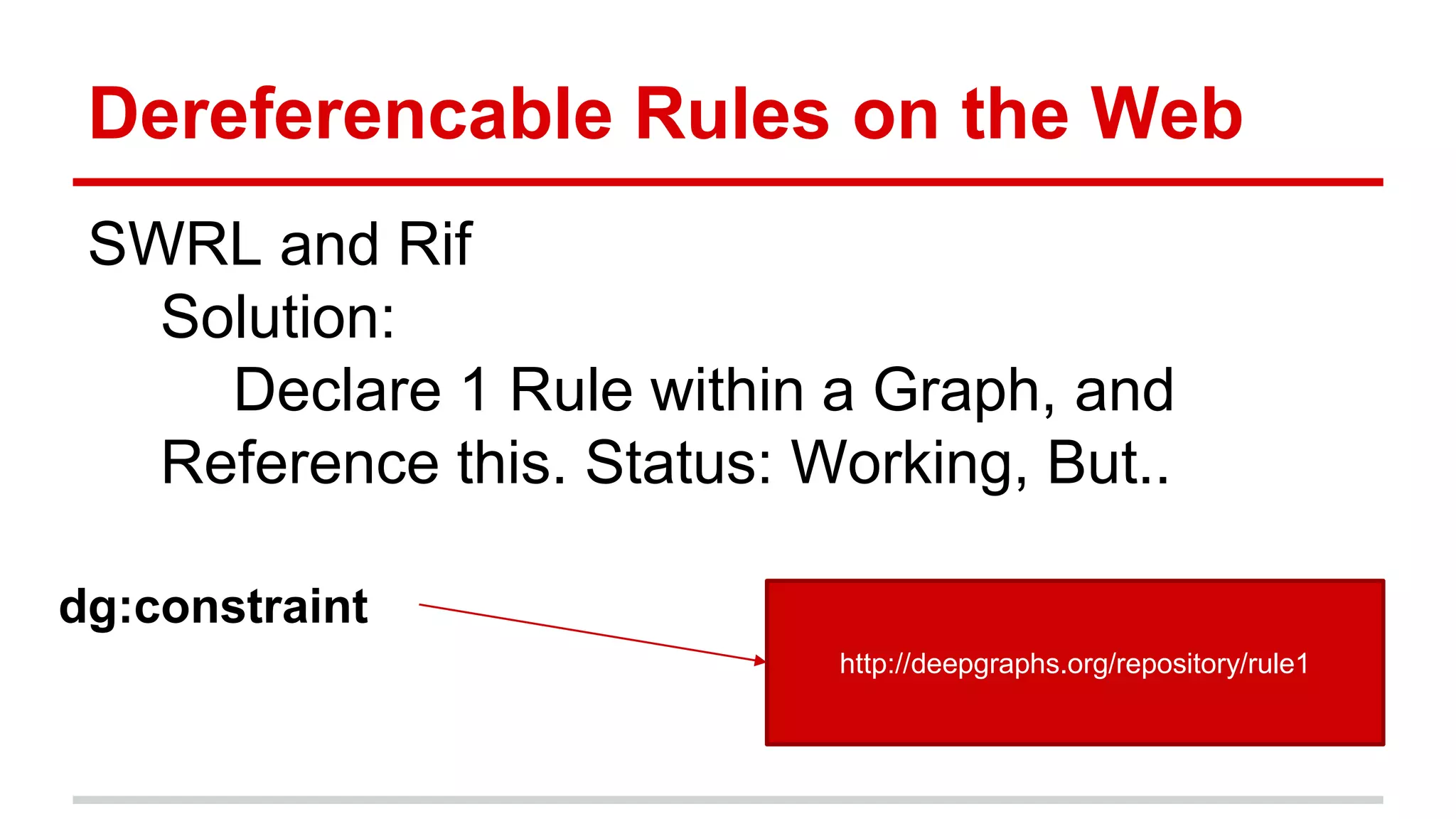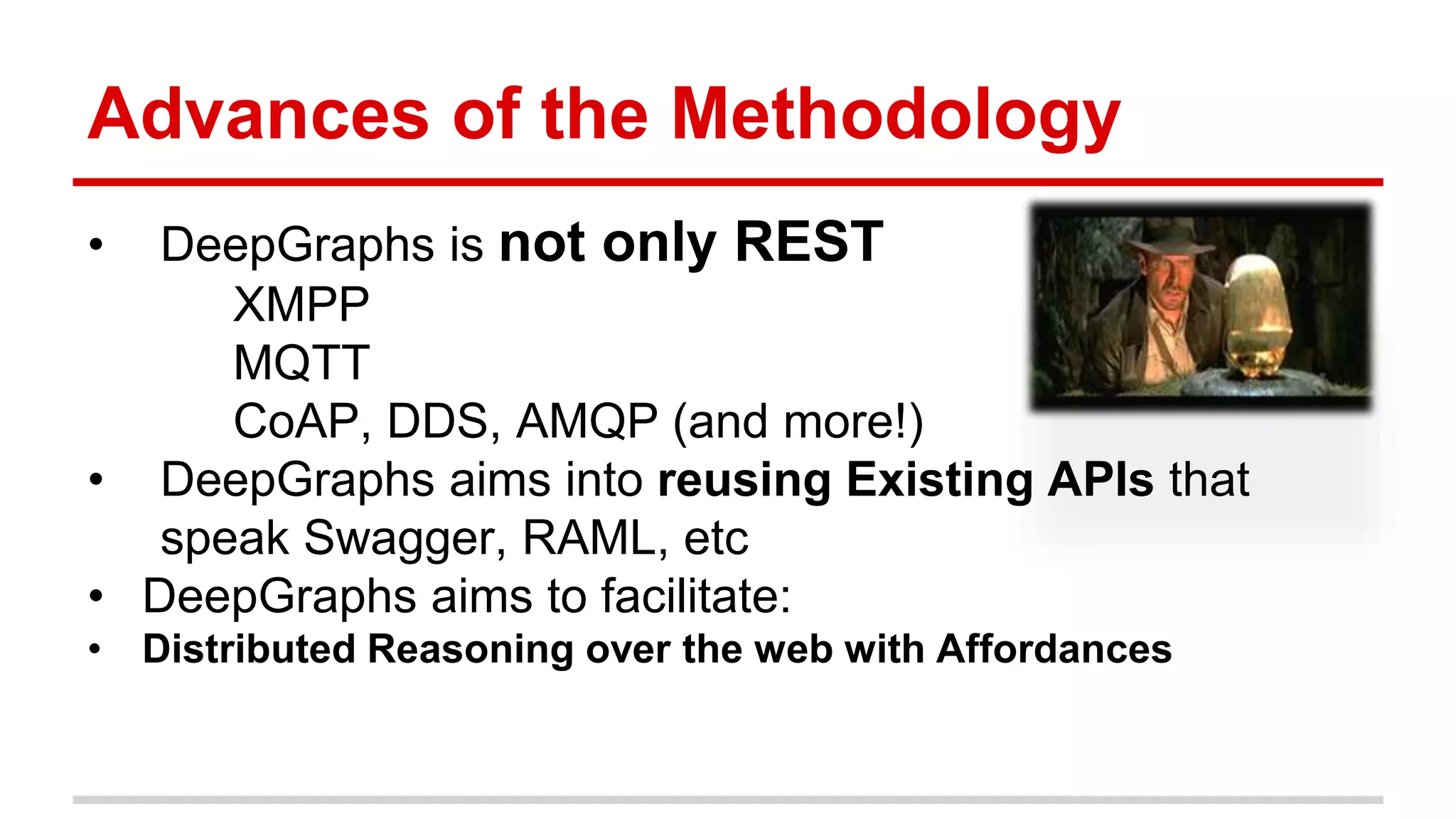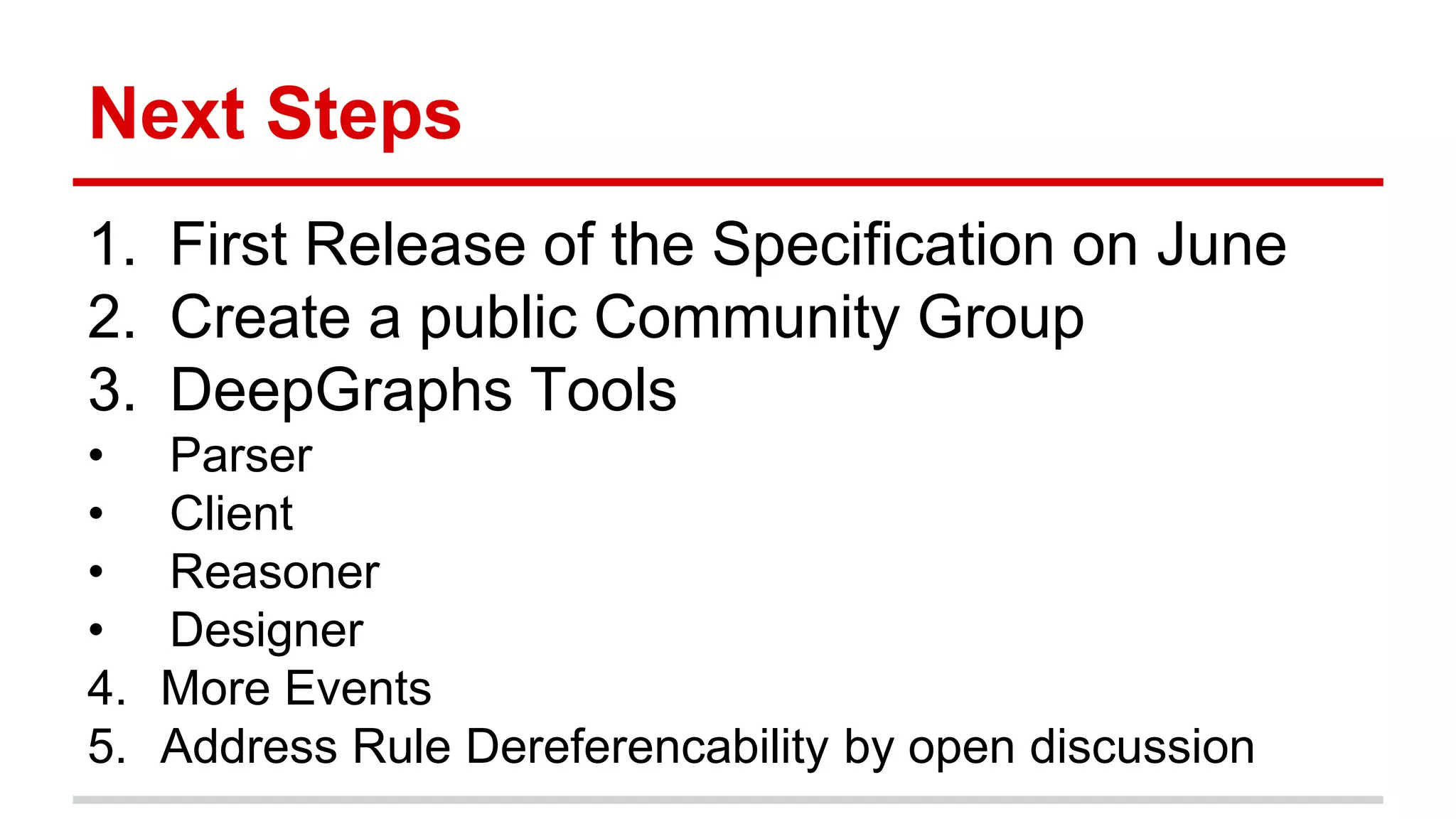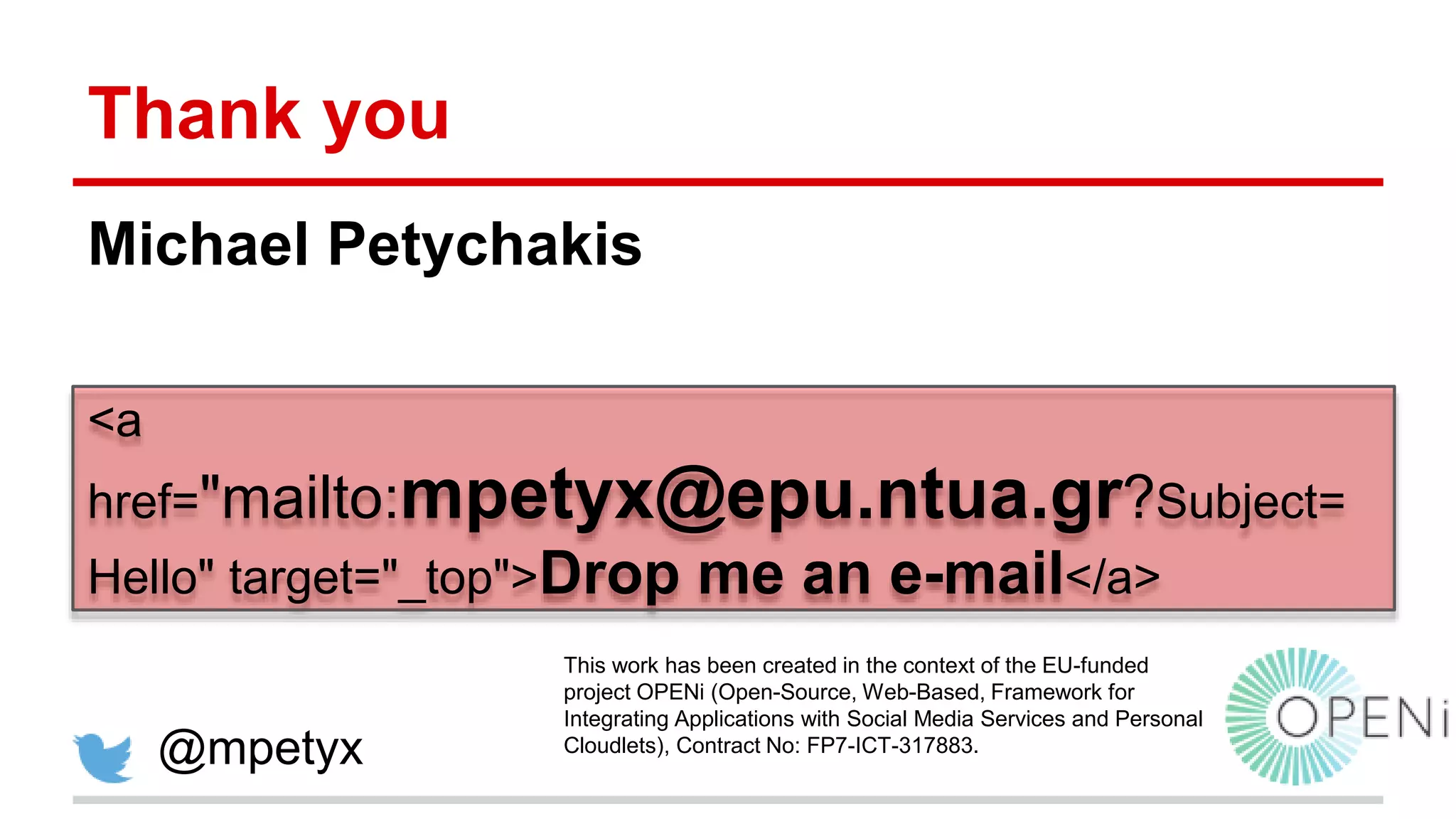The document discusses the integration of rules into existing hypermedia APIs, emphasizing the need for a structured approach to manage API interactions through frameworks like DeepGraphs. It presents methodologies for modeling hypermedia responses and outlines future tool developments aimed at enhancing interoperability and reasoning over the web. The author, Michael Petychakis, highlights the project's advancements and invites community engagement for further collaborations.
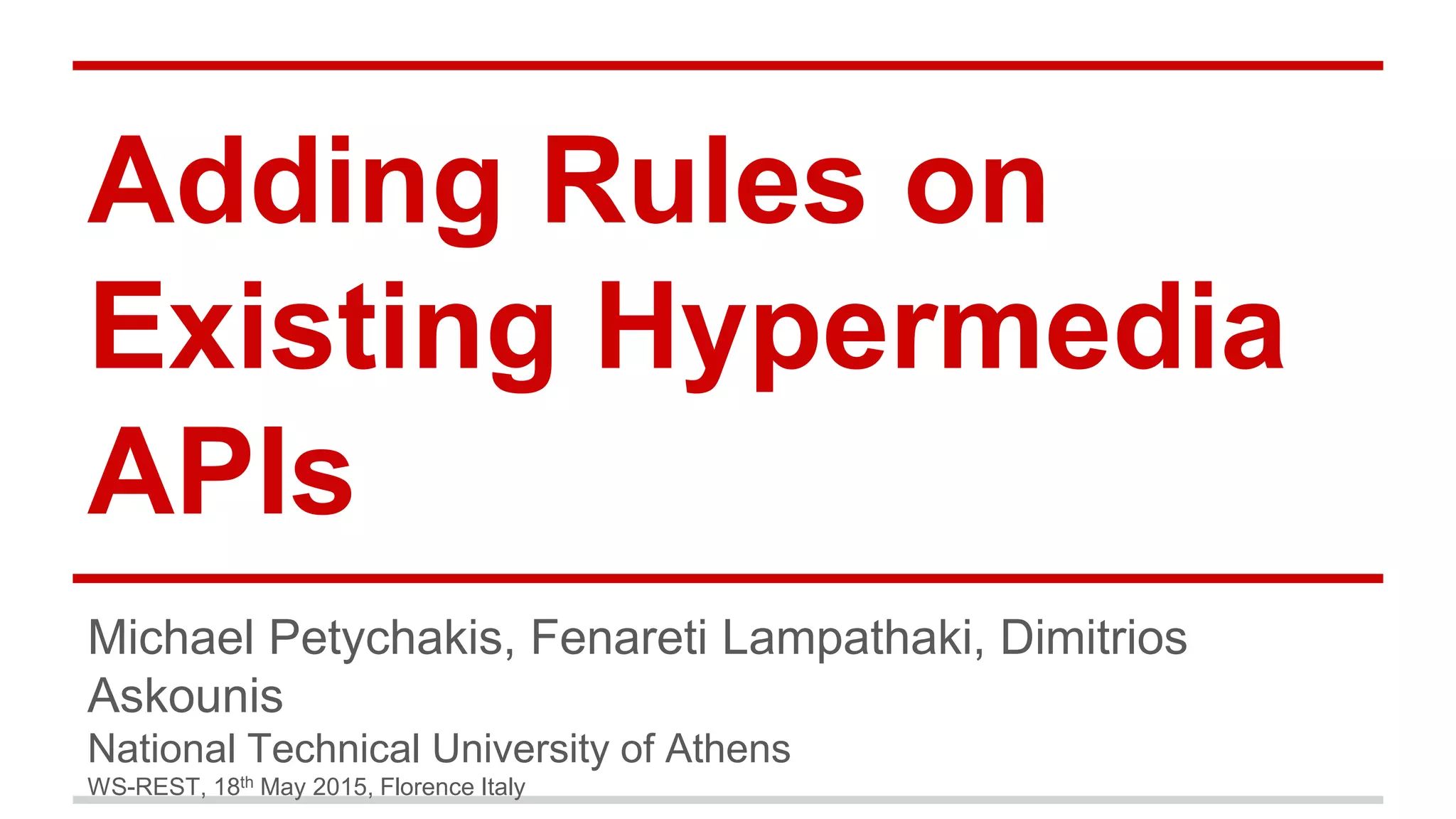
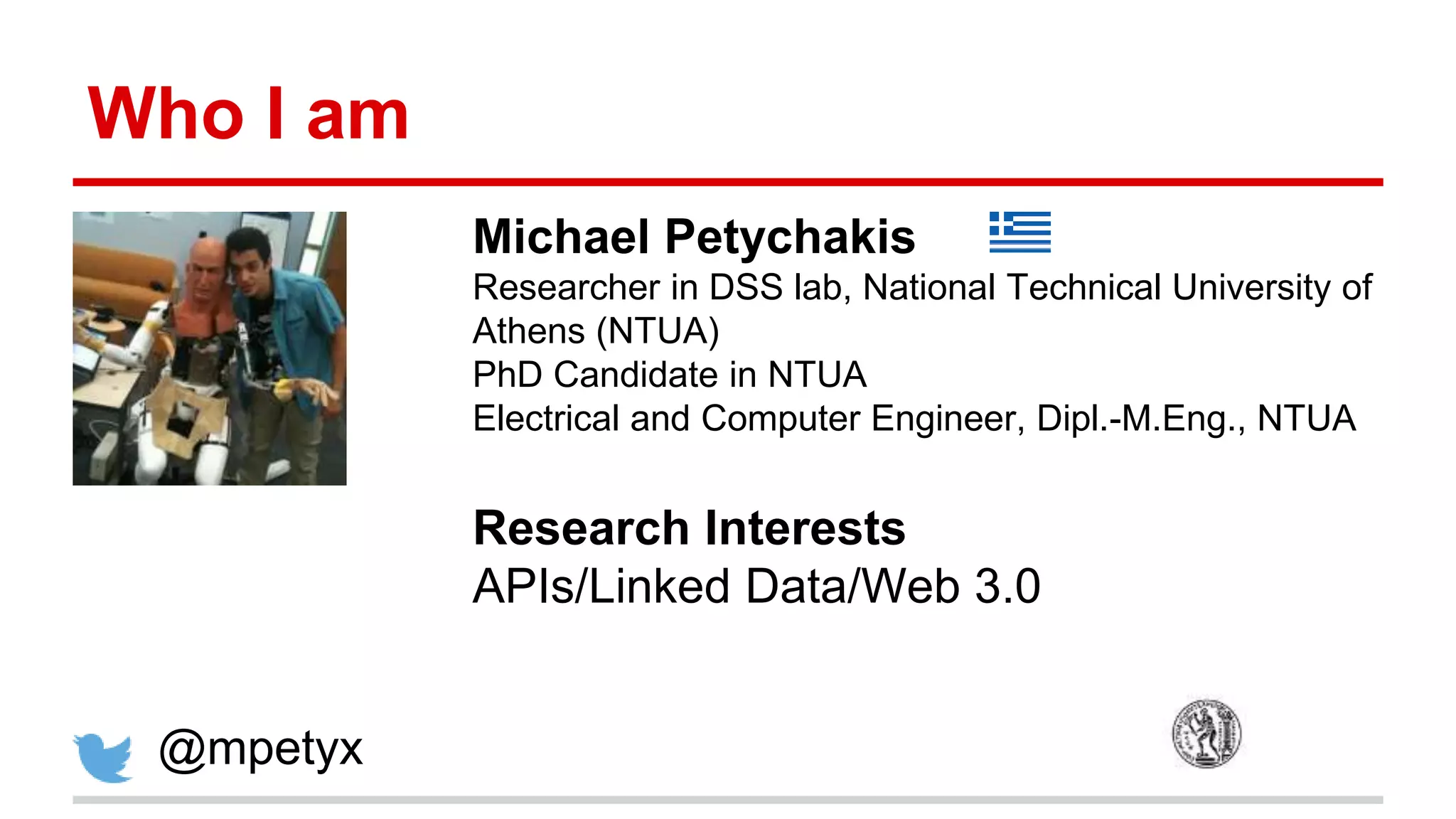
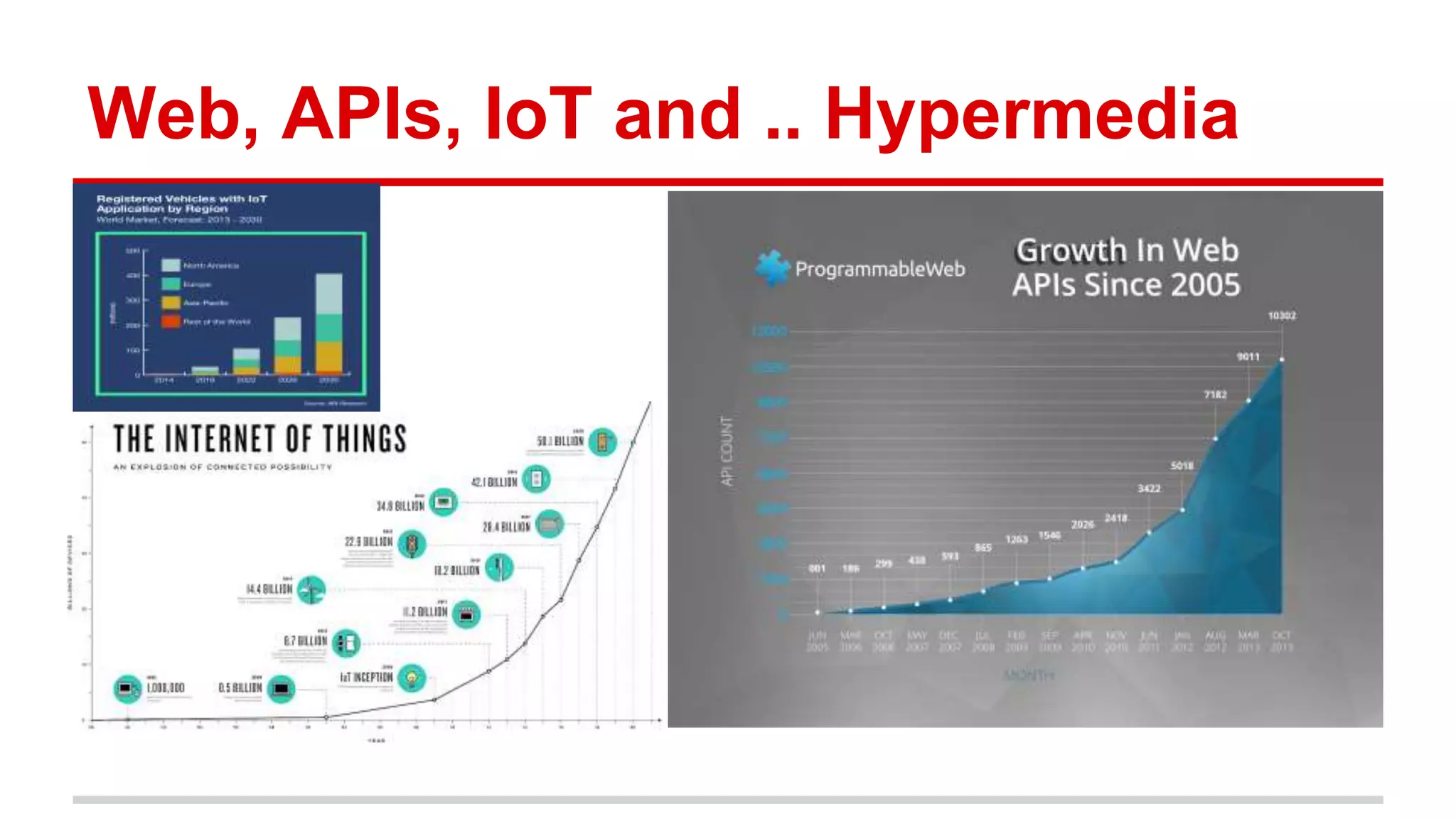
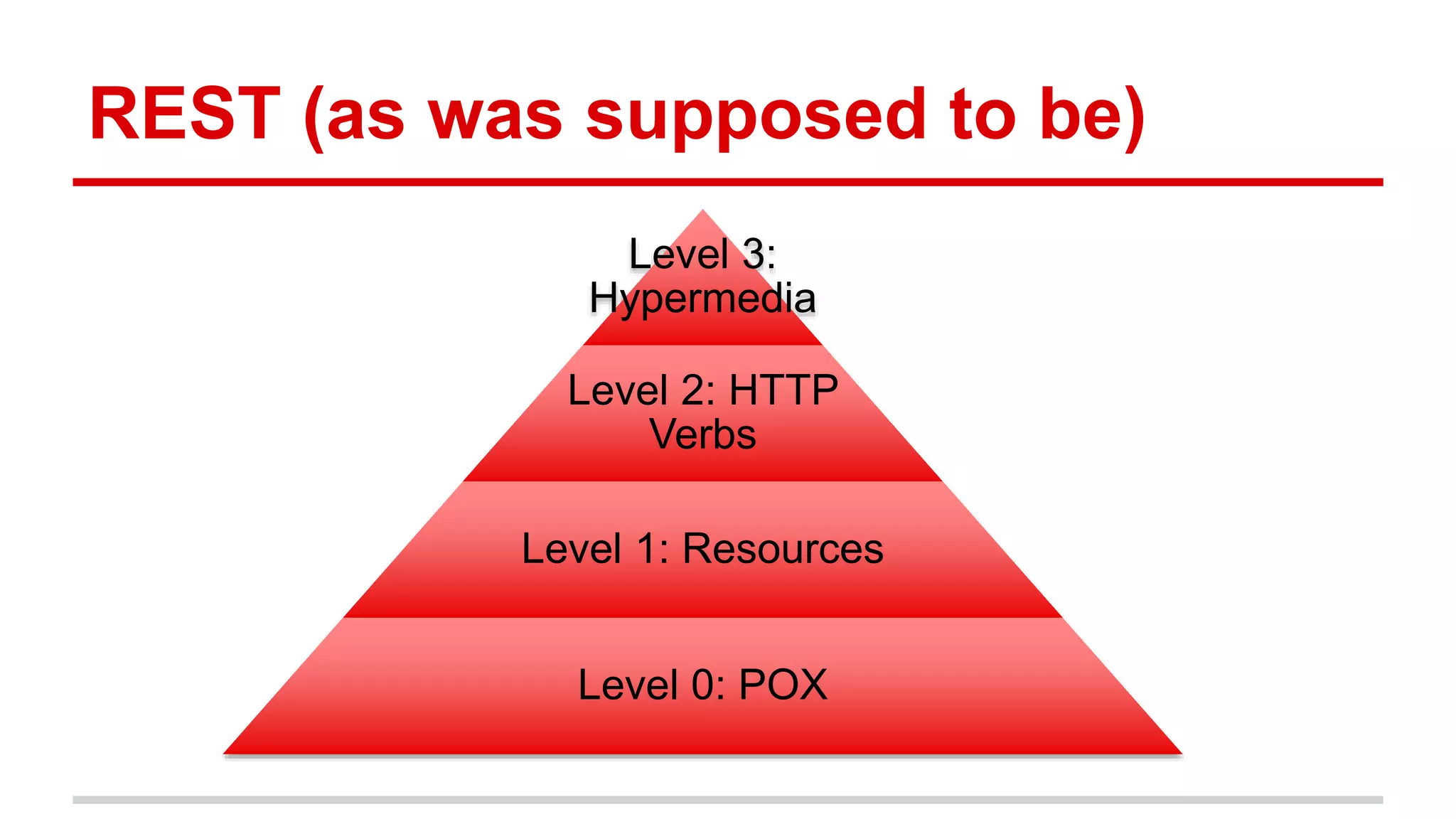
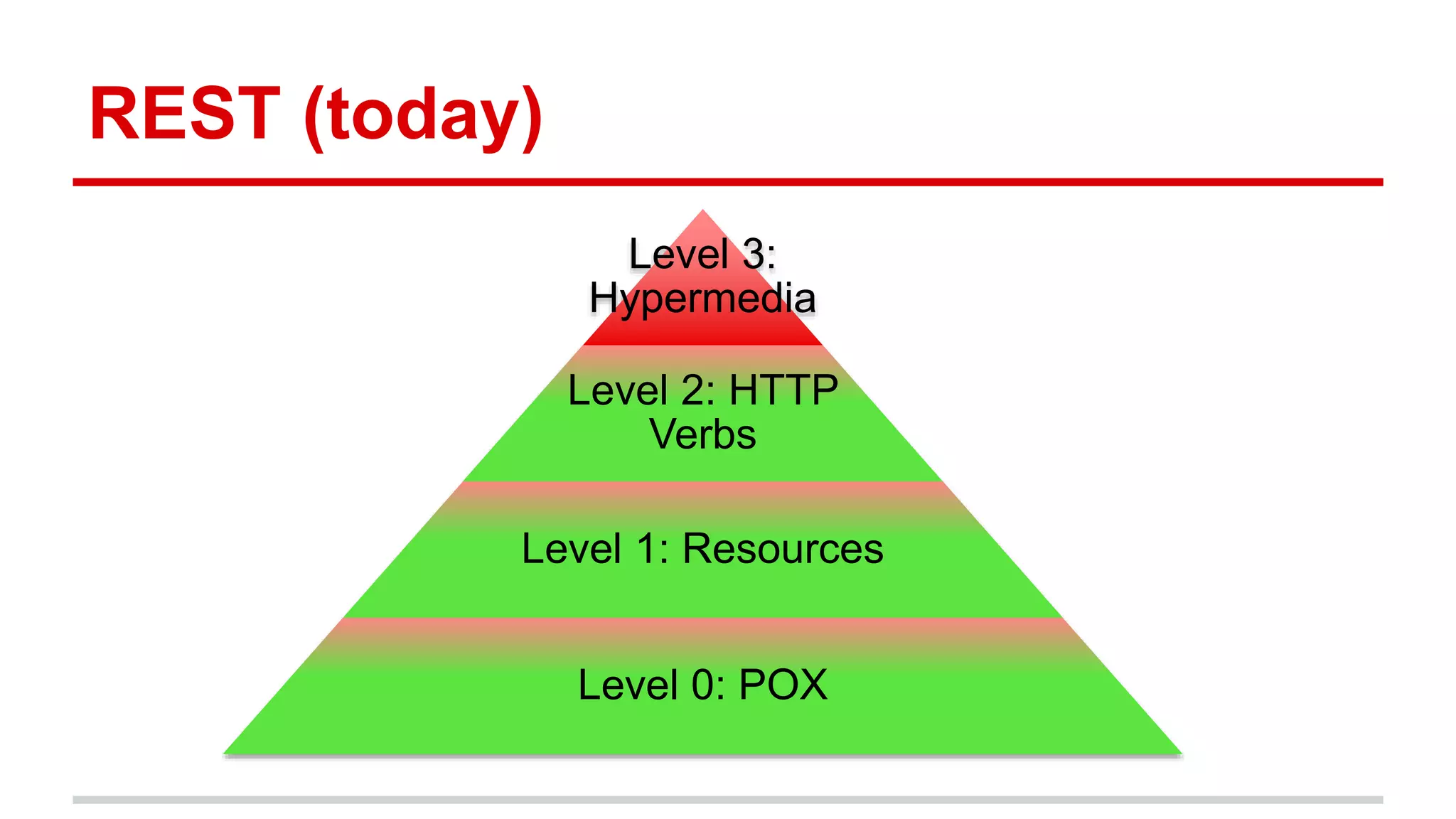
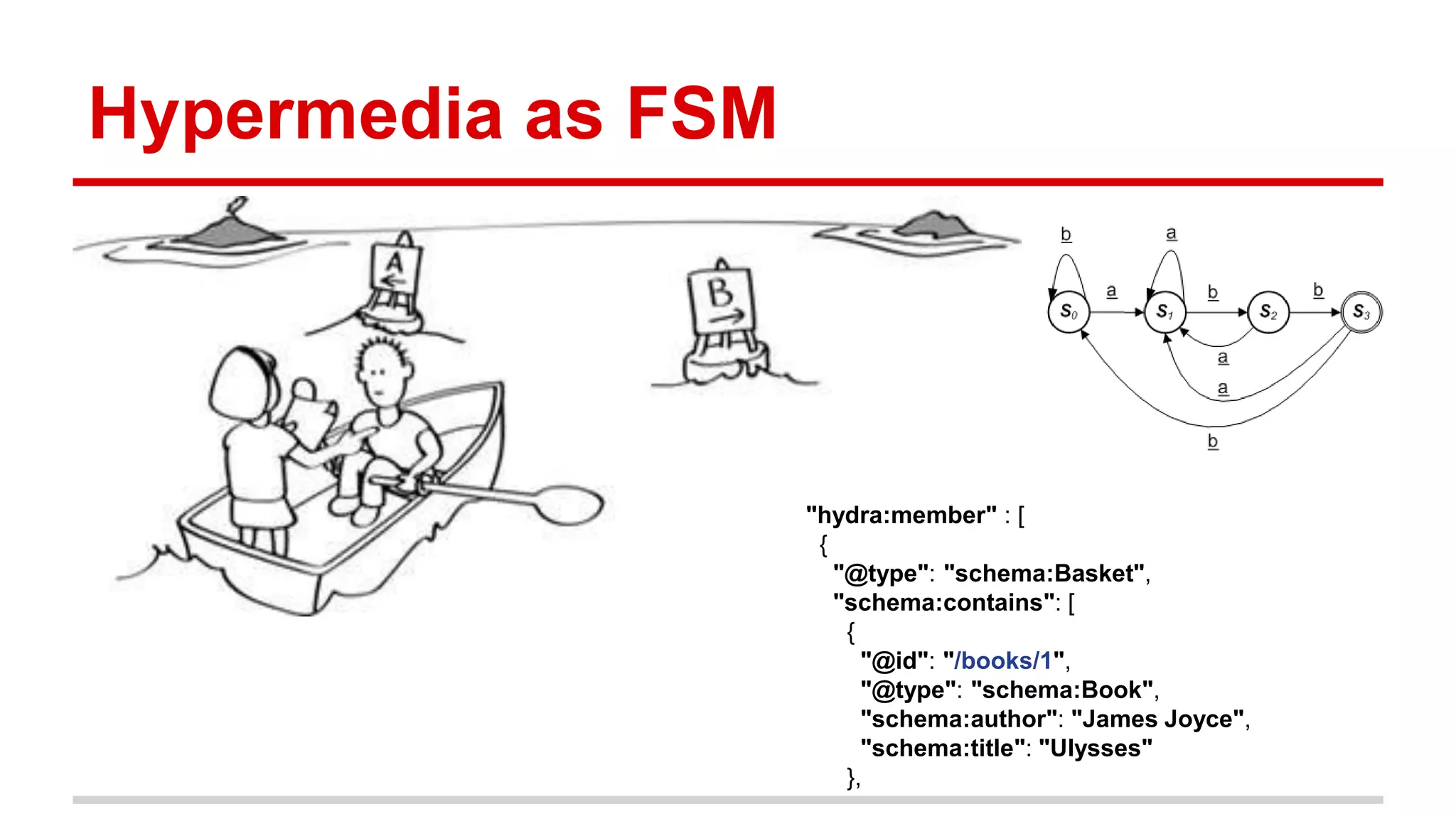
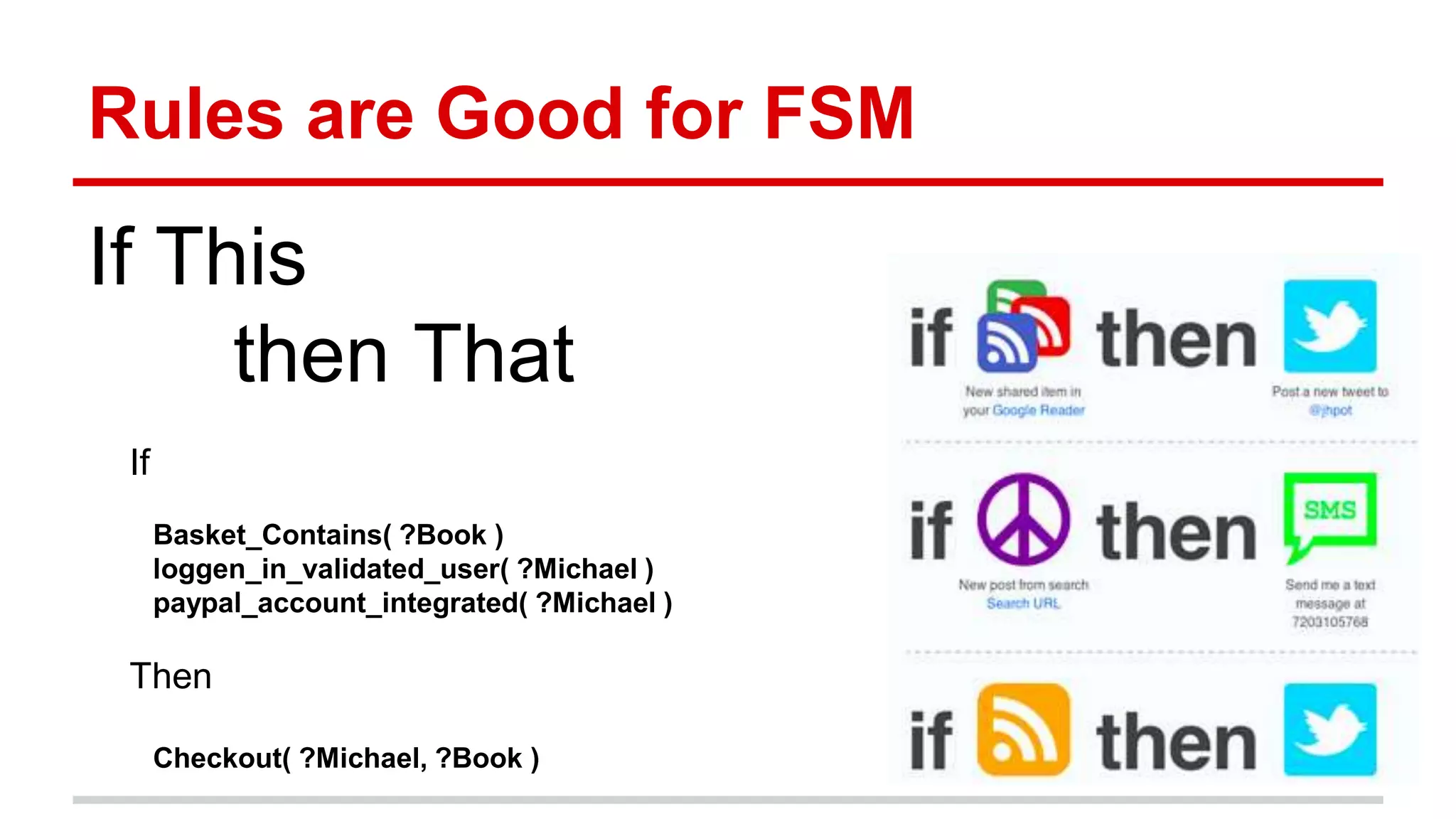
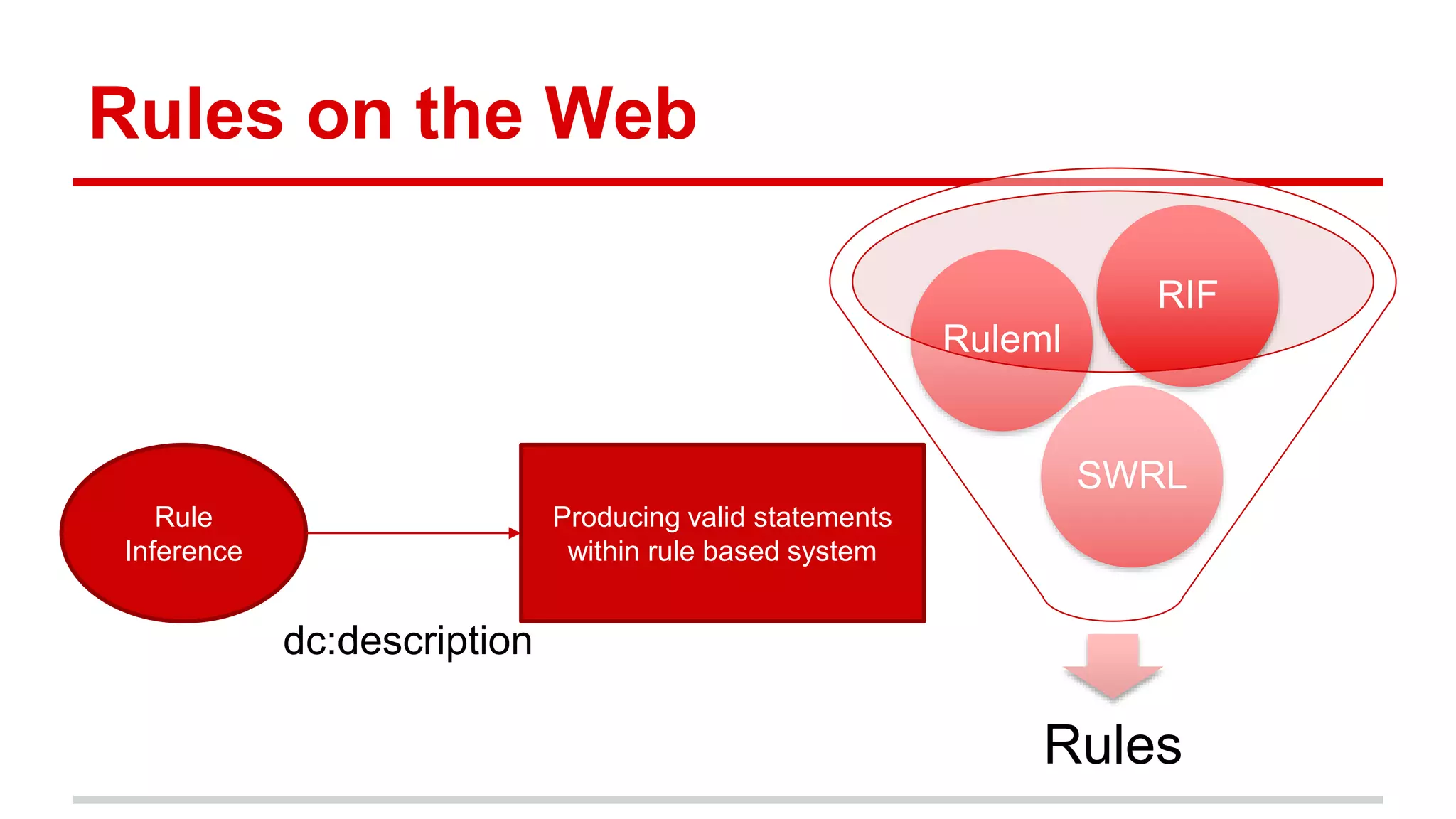
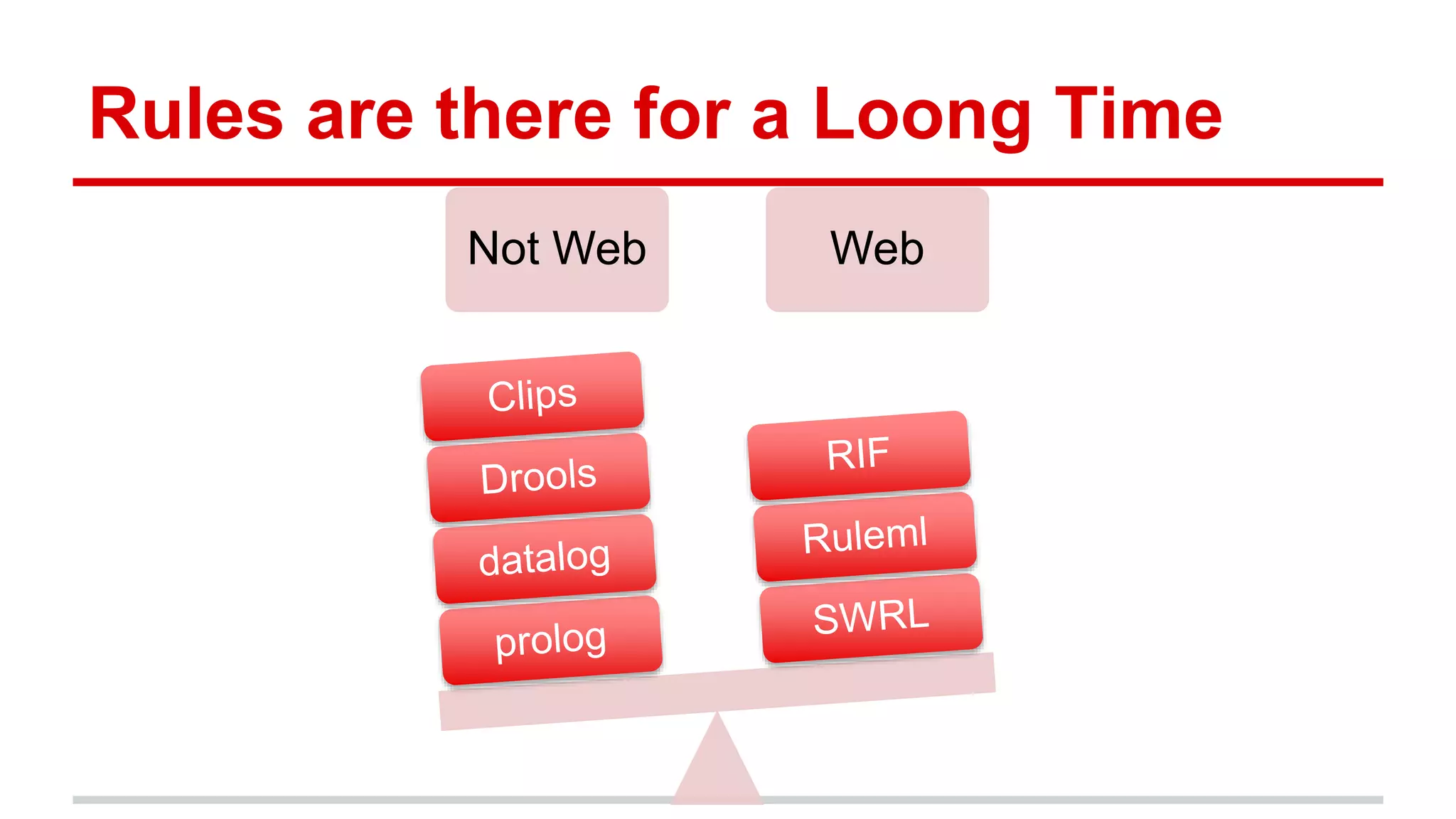
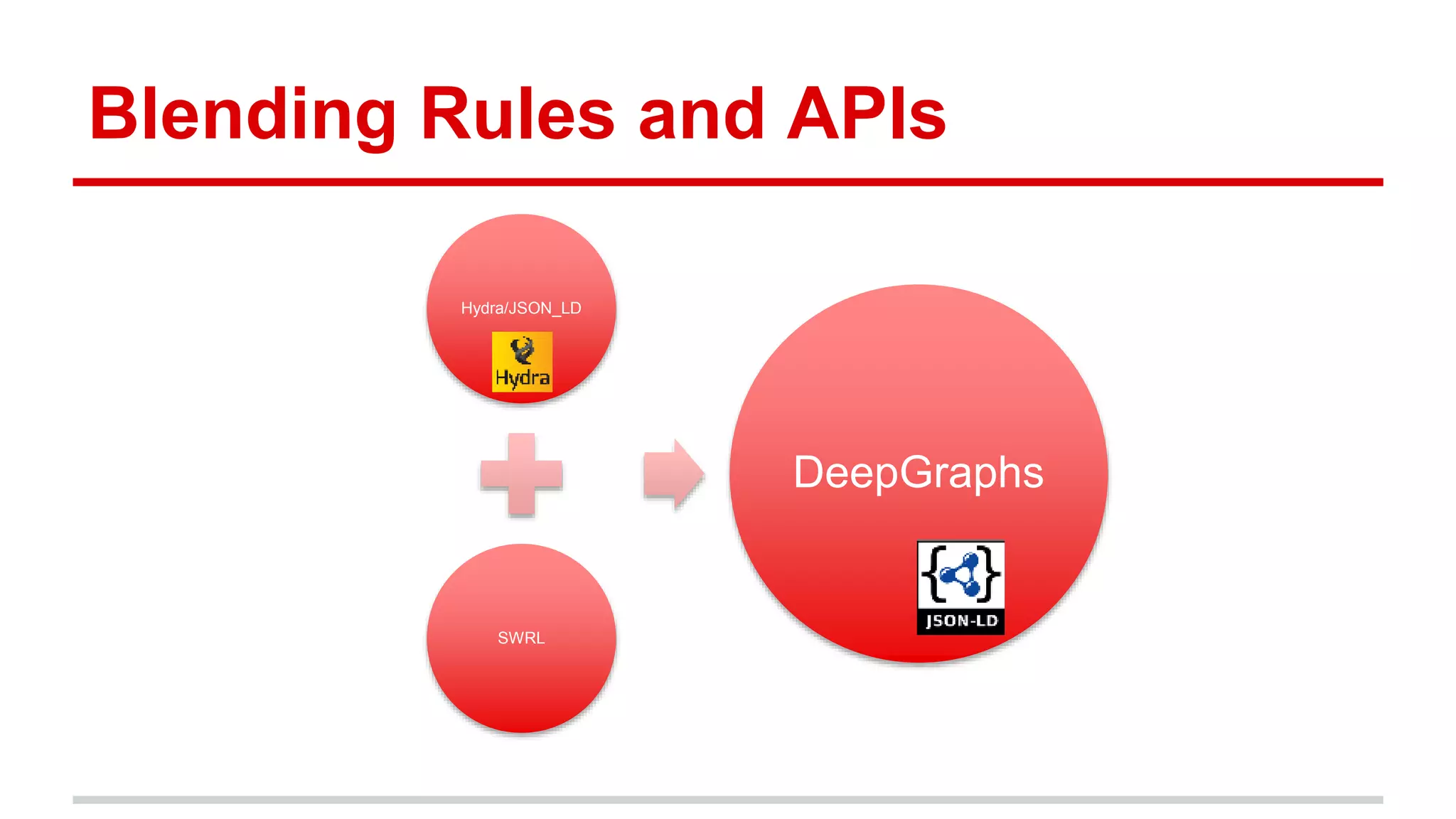
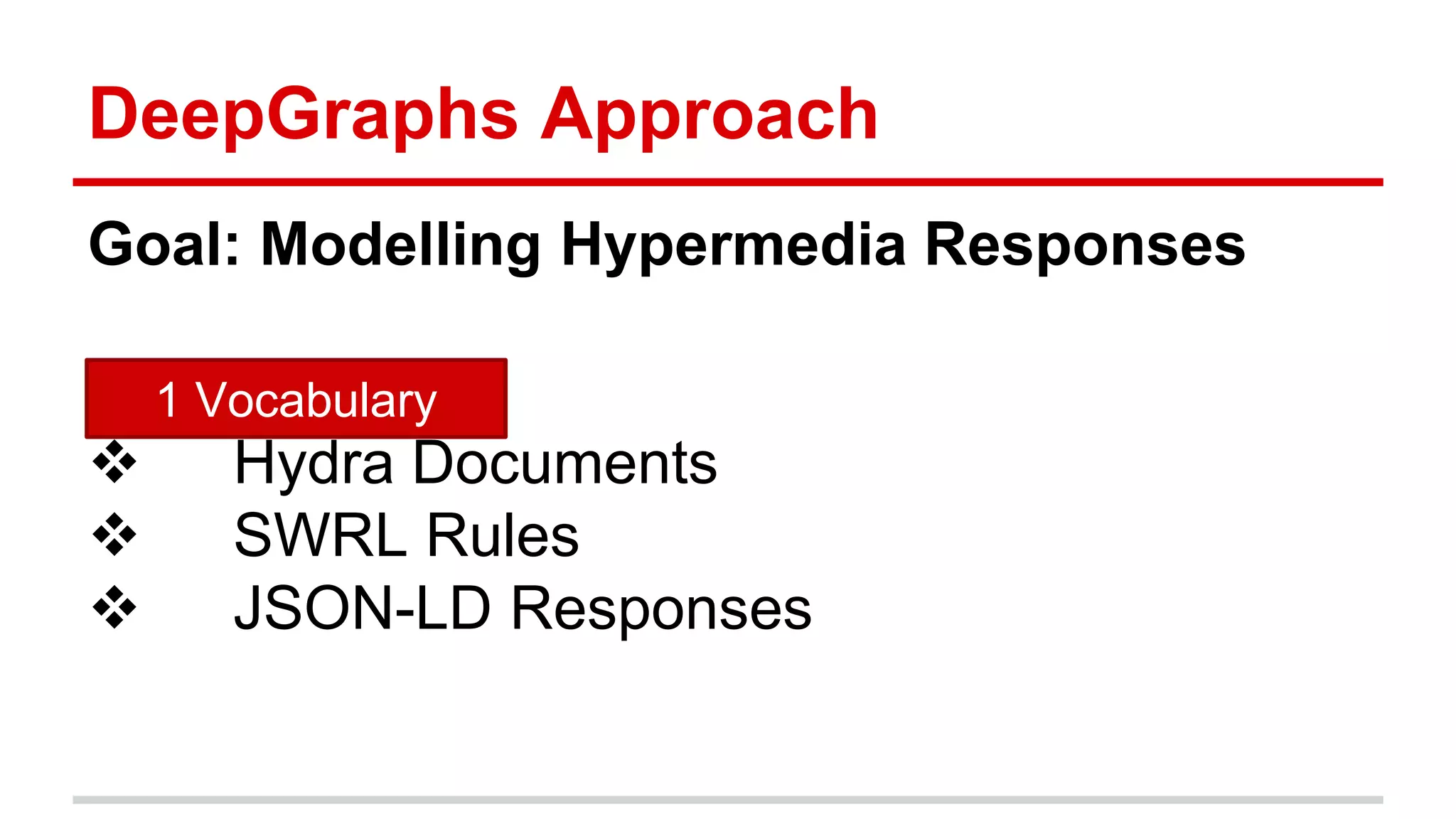
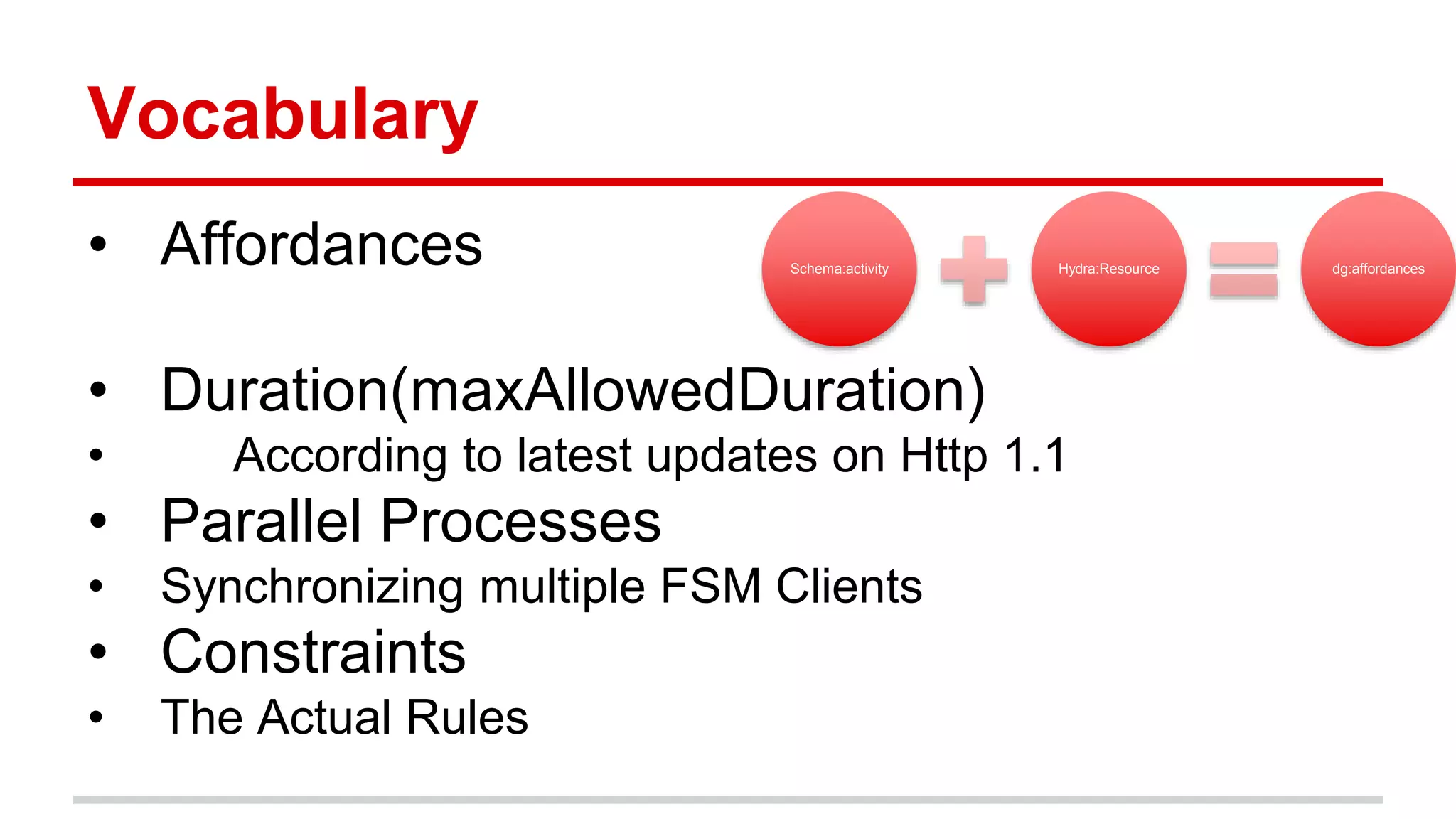
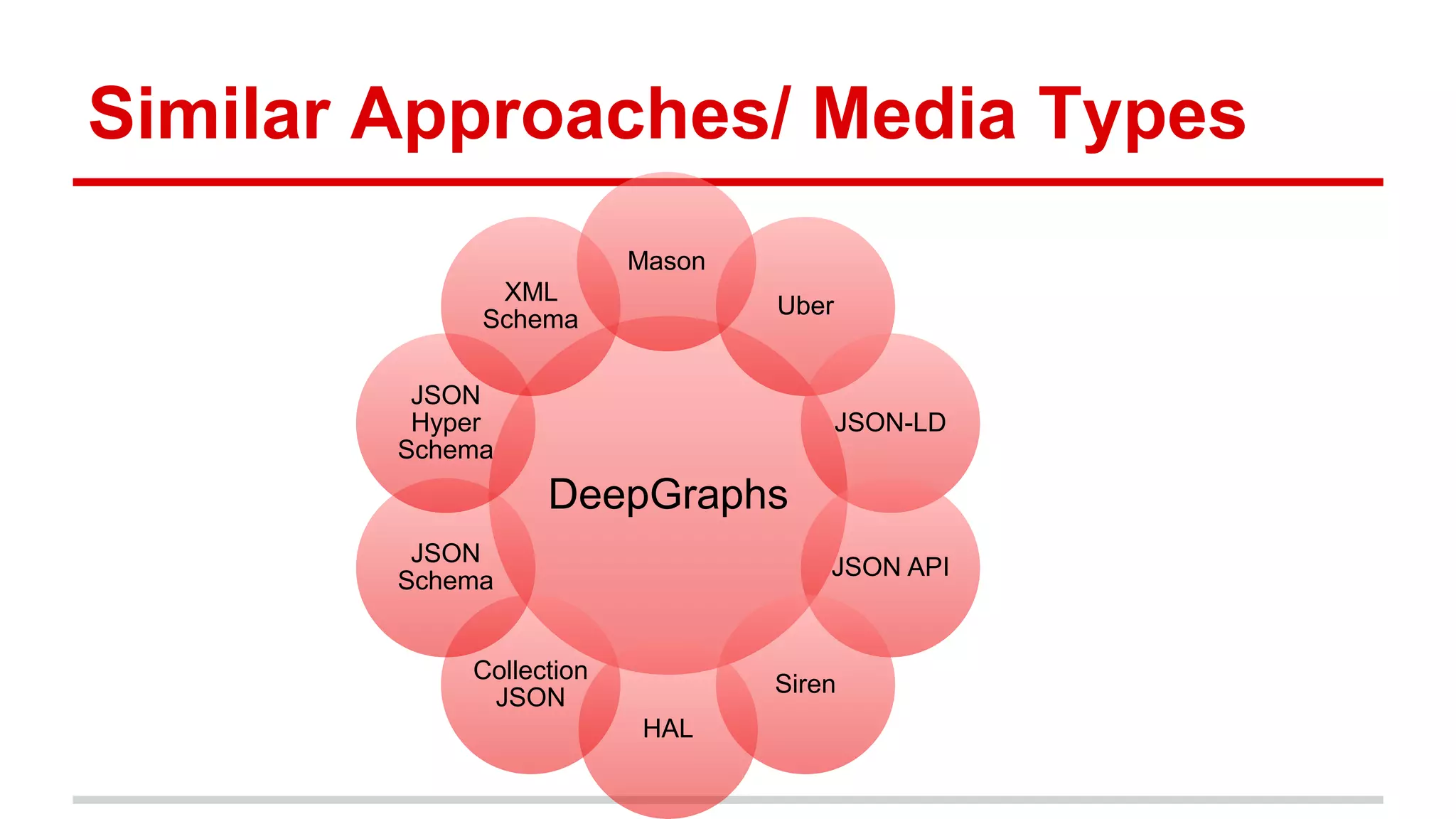
![Example: Bookstore "dg:affordances": [ { "@type": ["schema:Action","hydra:Operation"], "@id": "/RemoveBook", "hydra:method": "DELETE", "hydra:expects": "schema:Book", "hydra:title": "Deletes a Book resource.", "hydra:returns": "owl:Nothing", "rdfs:label": "Deletes the Book resource." },](https://image.slidesharecdn.com/ws-rest2015-150518094142-lva1-app6892/75/Adding-Rules-on-Existing-Hypermedia-APIs-14-2048.jpg)
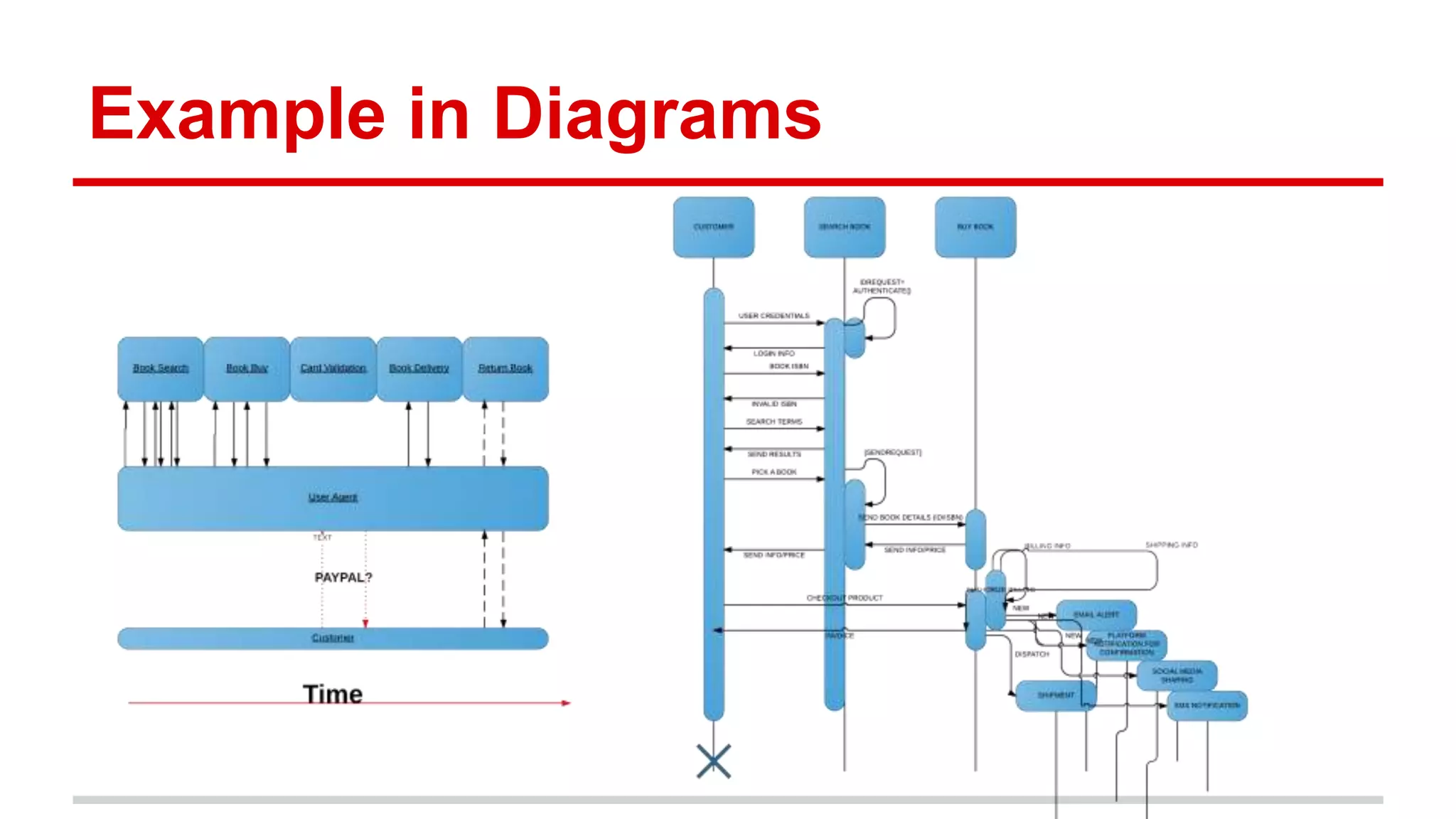
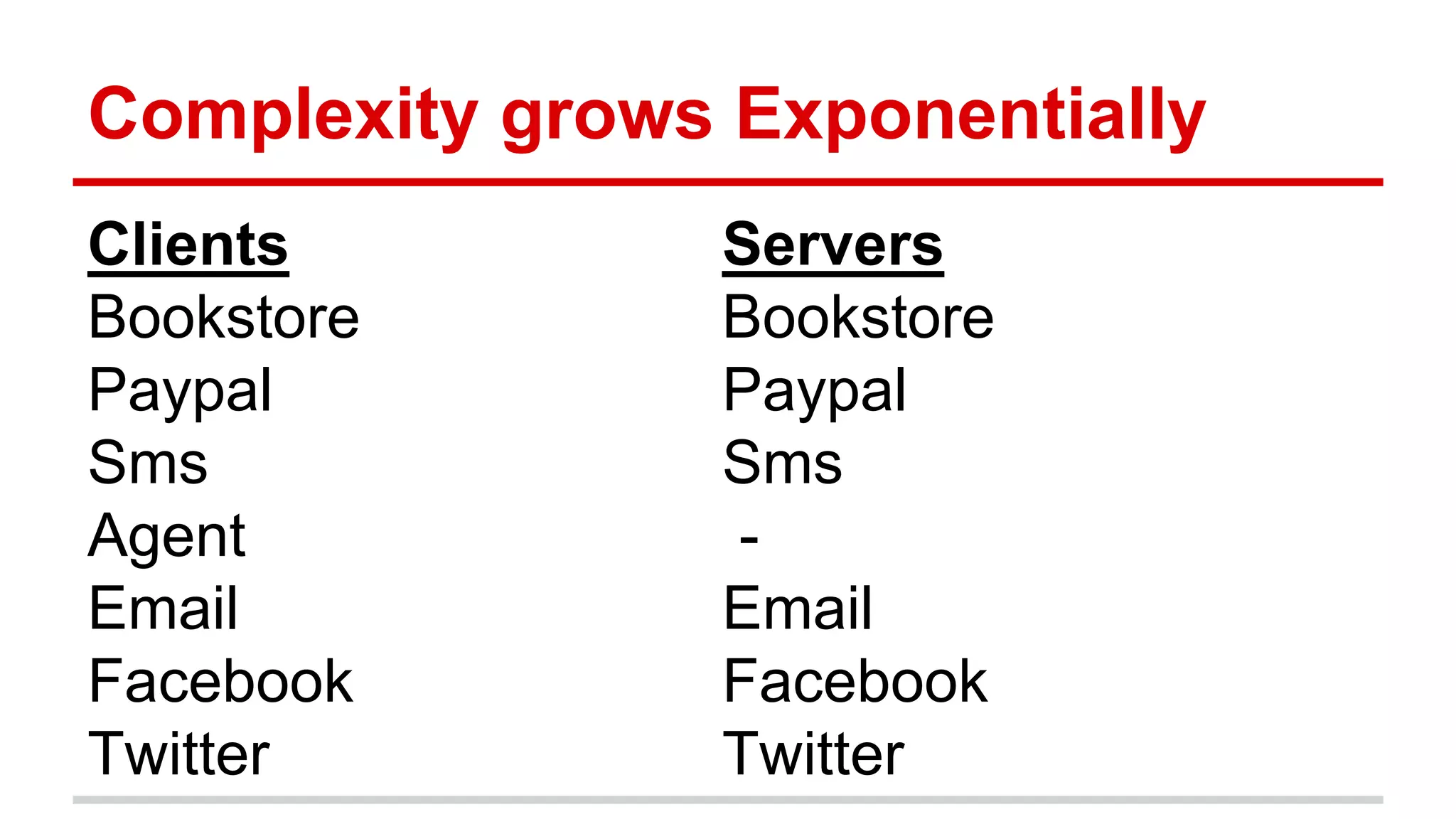
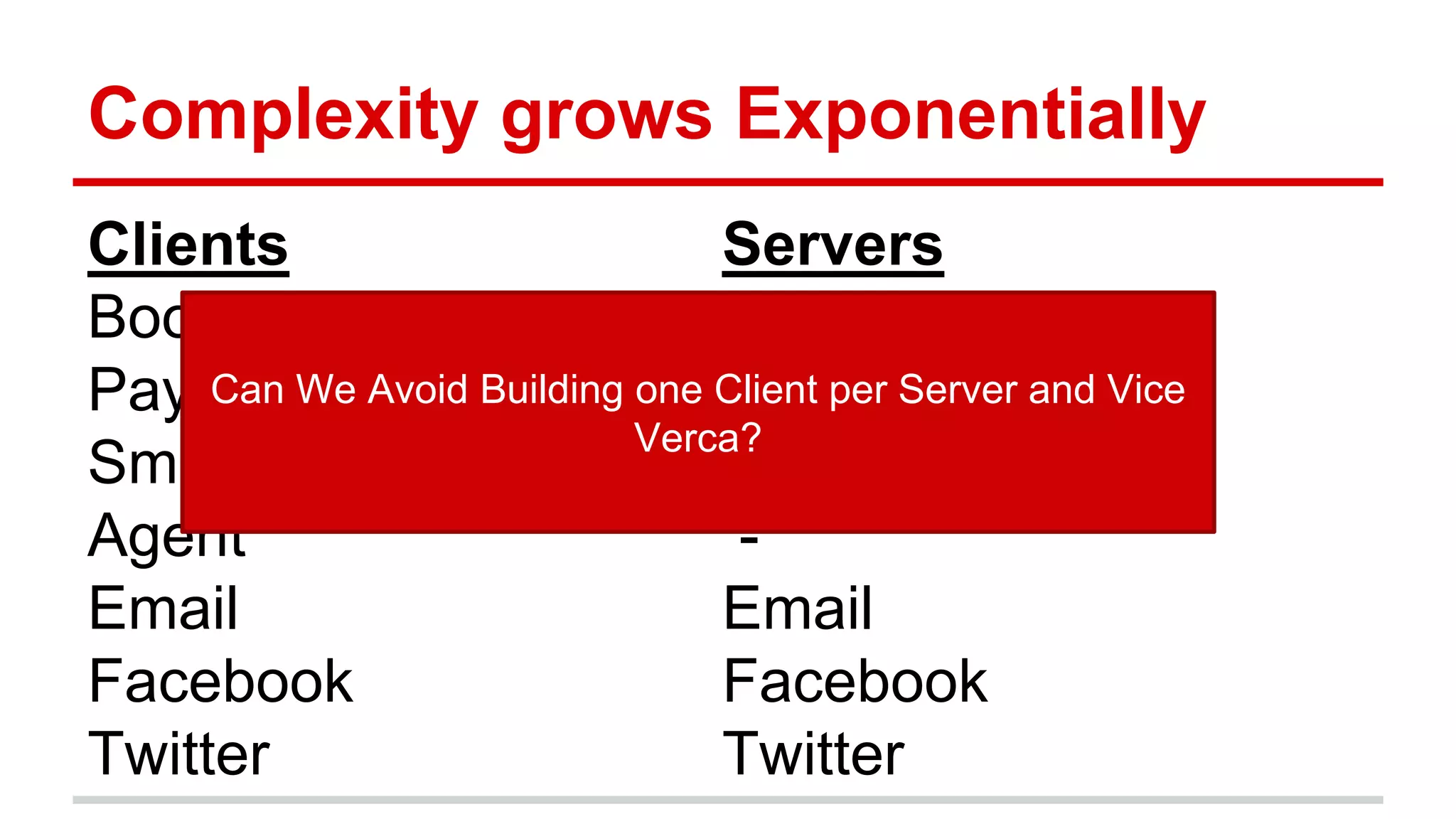
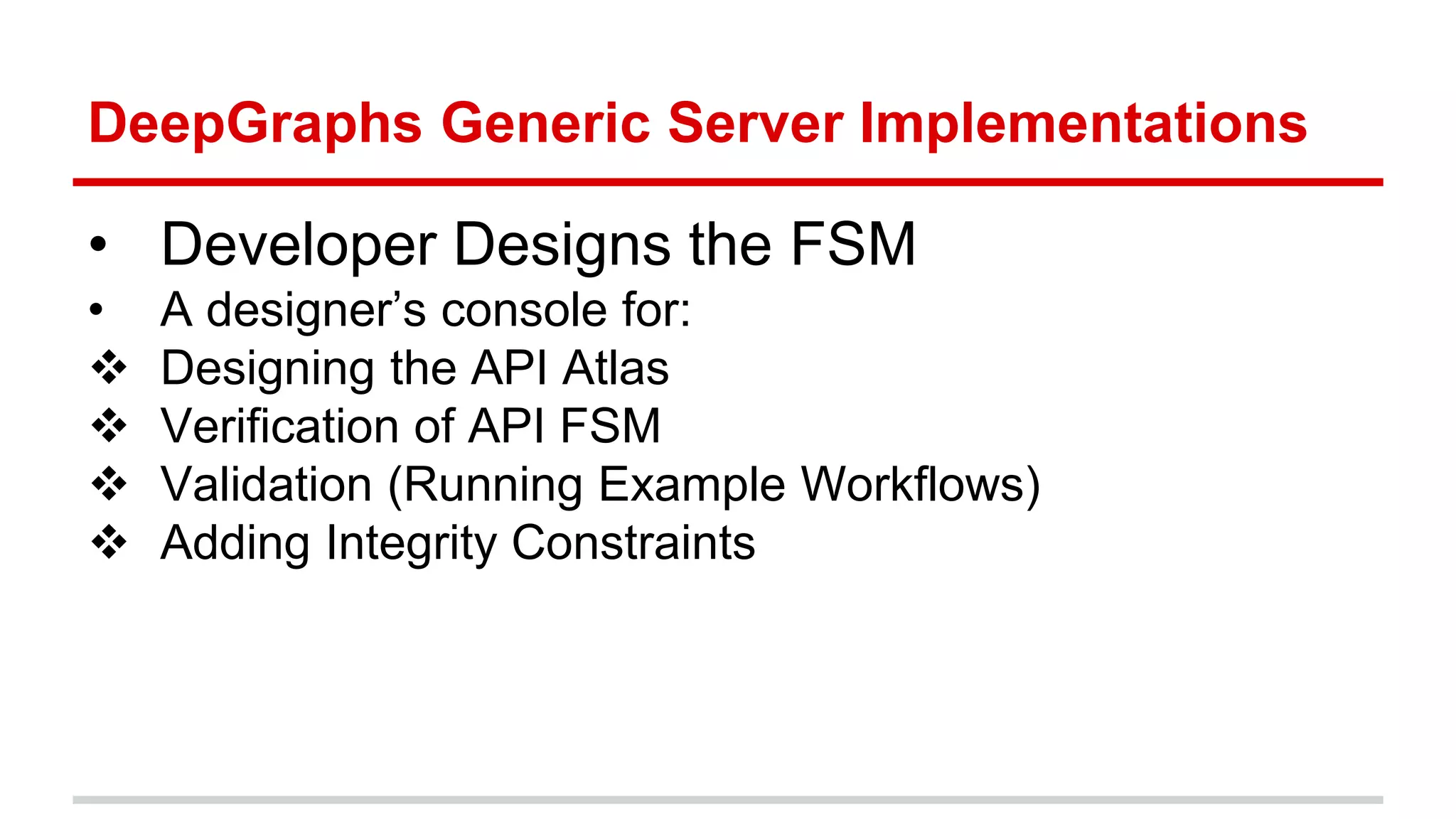
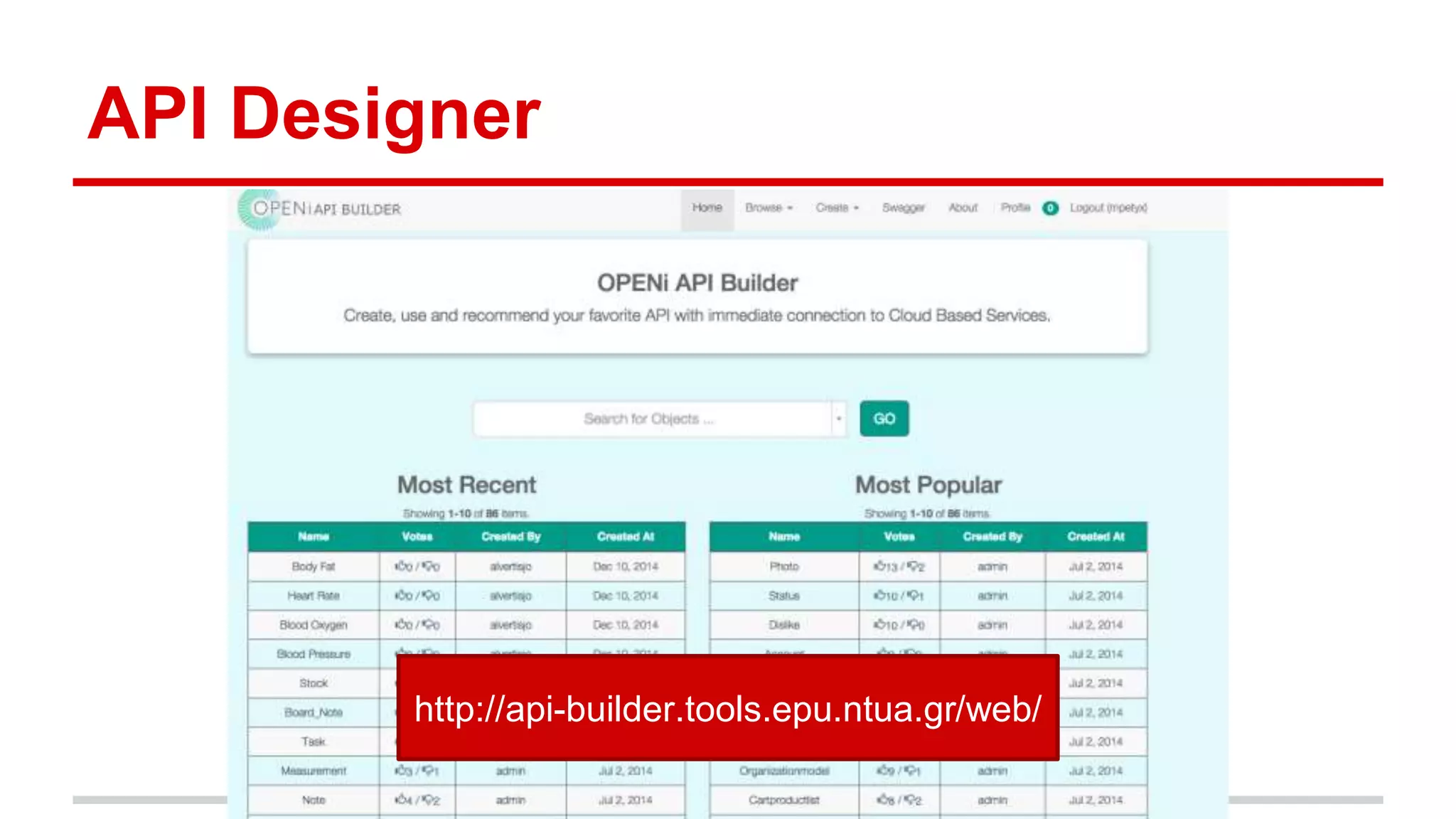
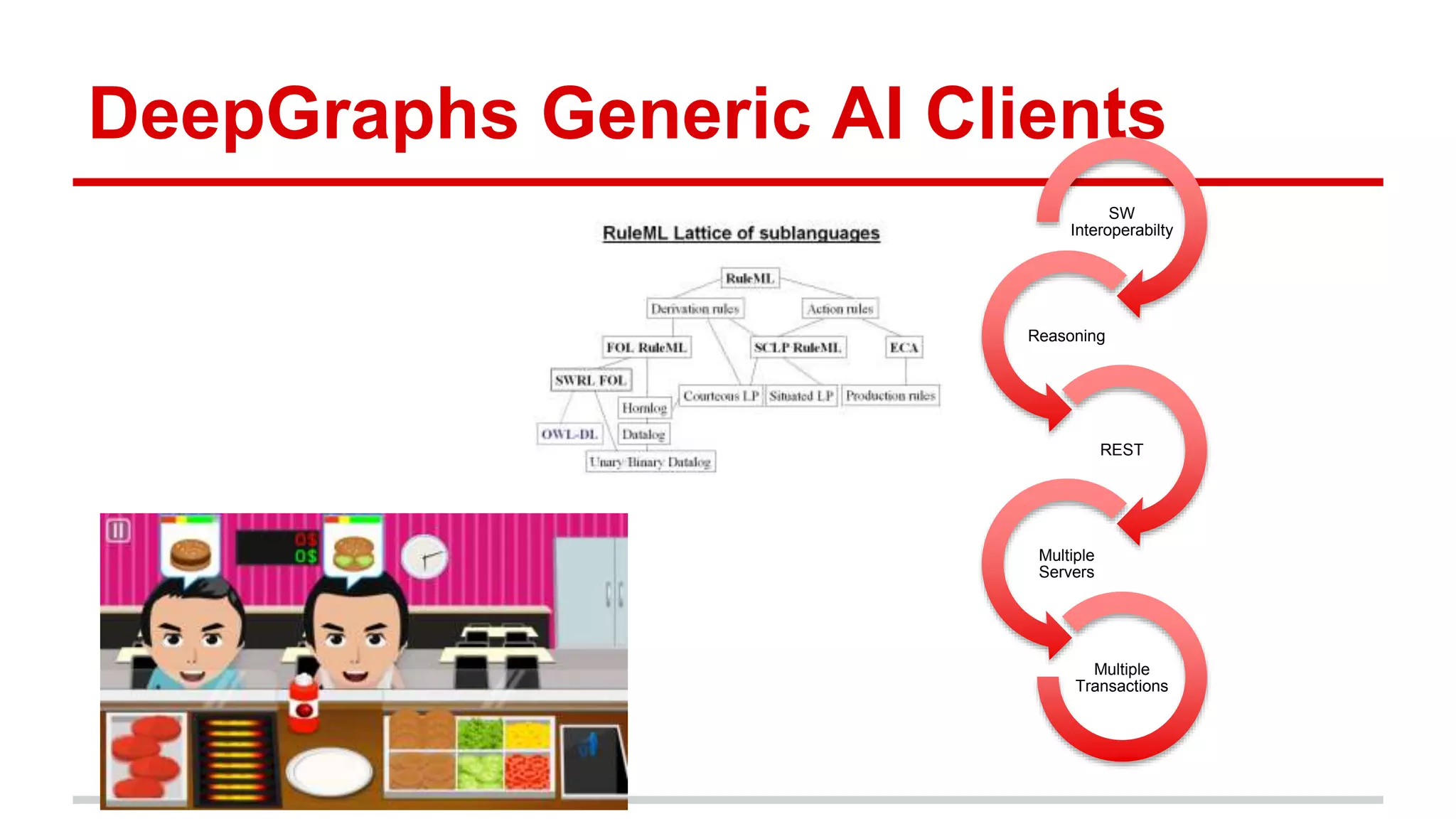
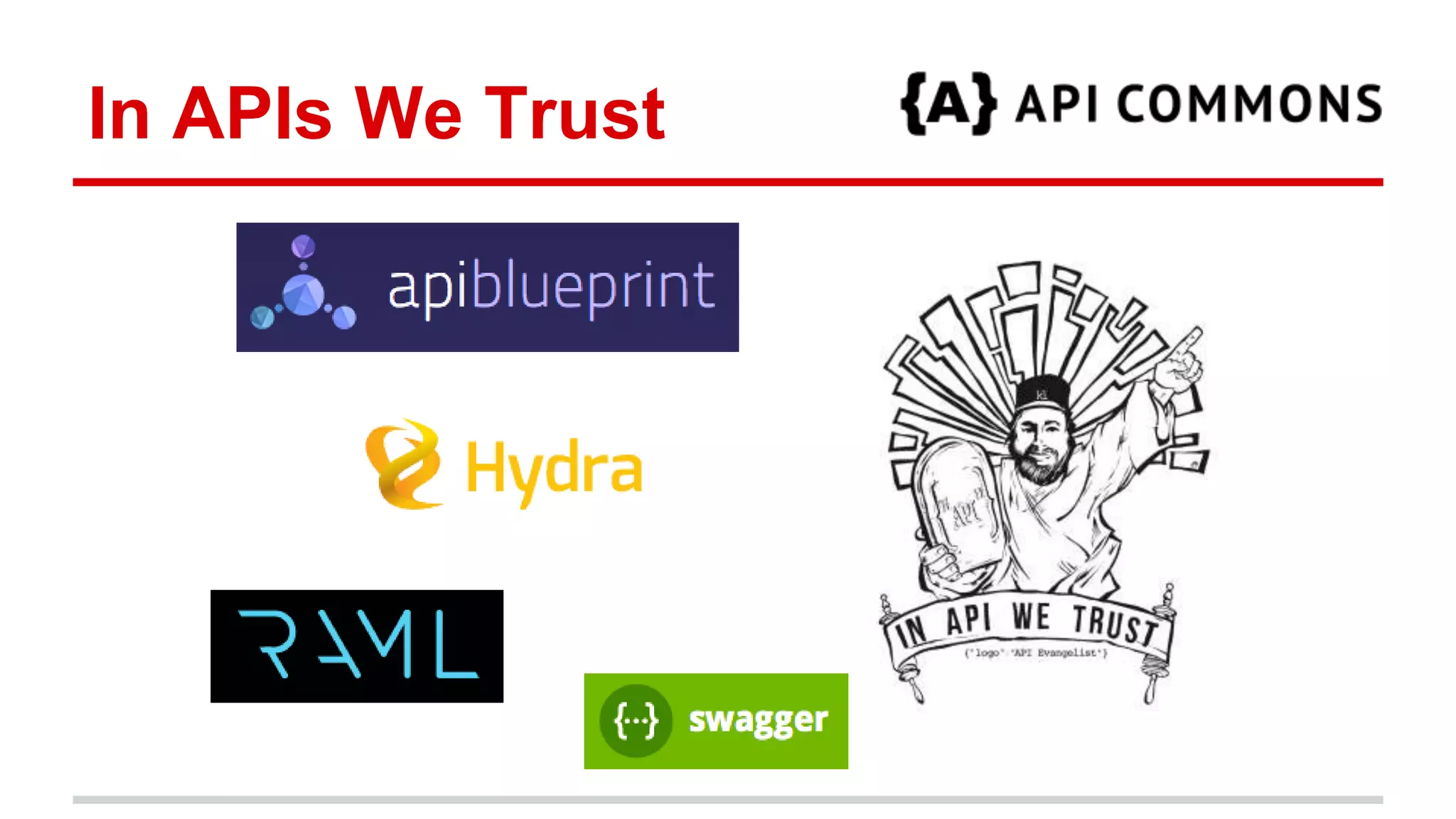
![Tools Around Spec ● API Builder ● PyAPI o from [Swagger, API Blueprints, Hydra, WADL, RAML] to [Swagger, API Blueprints, Hydra, RAML] ● PyRIF o from [RuleML, RIF, SWRL] to [RuleML, RIF, SWRL] ● DeepGraphs Parser ( Soon ) ● DeepGraphs Reasoner ( Soon ) o Datalog Approach o FSM resolver implemented now o Fluent Editor has been used for Evaluation](https://image.slidesharecdn.com/ws-rest2015-150518094142-lva1-app6892/75/Adding-Rules-on-Existing-Hypermedia-APIs-22-2048.jpg)
